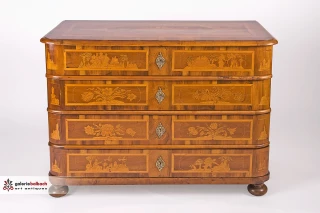The master craftsman's diploma
...craftsmanship has golden soil!
In the modern carpentry trade, the training as a journeyman and also in the master school, it is of course first and foremost about the production of furniture that corresponds to our modern times. With modern materials and sometimes highly complex machines, furniture is produced quickly and, in the best case, at a reasonable price.
Despite this, or perhaps because of it, traditional production methods are still taught in training.
The selection of the right wood, the assembly of beautiful veneer surfaces or the production of classical wood joints are still part of the teaching content in the vocational and master school. In the inter-company training, the use of hand tools such as planes, chisels and back saws is practised.
Knowledge about solid wood with all its advantages and disadvantages is also taught; what is the swelling and shrinkage behaviour of the individual types of wood, which type of wood can withstand heavy loads, which are native and which are tropical woods?
And so I notice again and again in my everyday work that my training as a journeyman carpenter and the further training to become a master carpenter paved the way for the profession I practise today.
Appreciation for wood as a material, respect for the craftsmen of the time and expert knowledge of the costructures of the respective epochs are basic prerequisites for dealing with historical furniture!
Also interesting

Hotly loved patina
Furniture restoration with patina preservation Whether chest of drawers, table, cupboard or chair, if [...]Read more

Antiques - absolutely unique
Individual living - with an antique piece of furniture! This chest of drawers exists exactly once. The [...]Read more

The ecological footprint
Sustainable living with antique furniture! A carpenter, a carver and a blacksmith helped to make this [...]Read more
